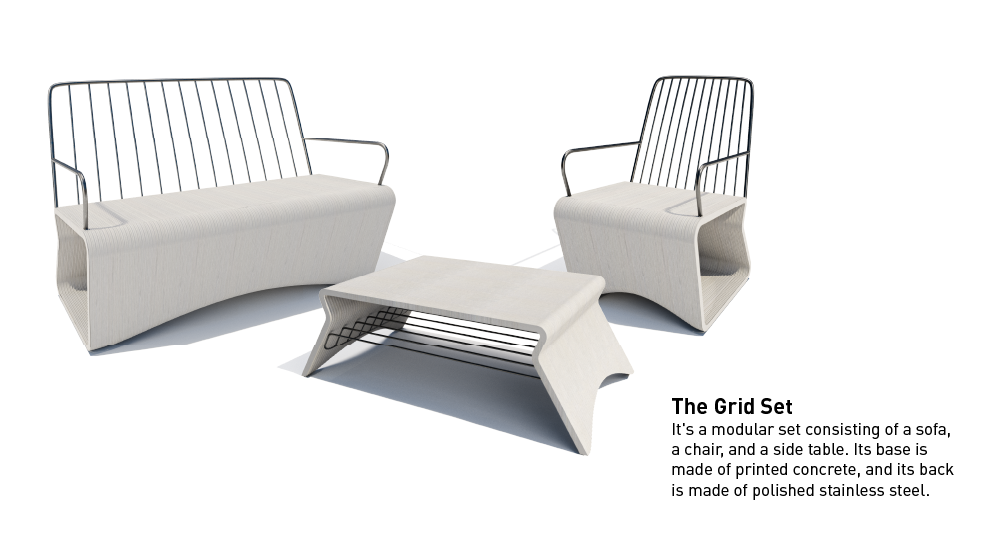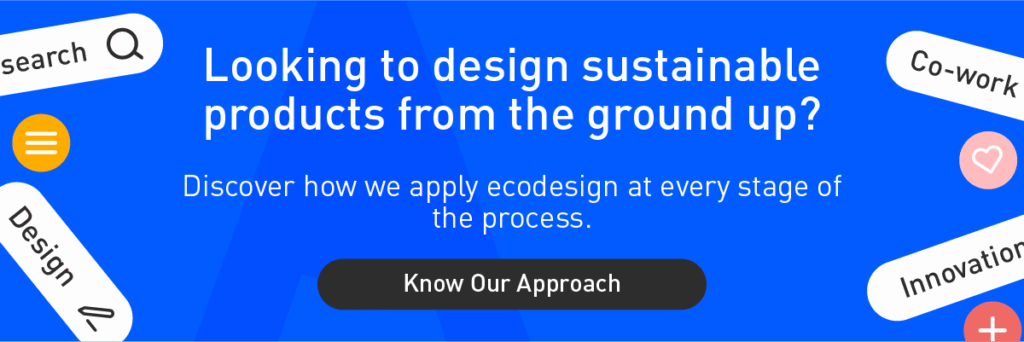Let’s imagine any product: a chair, a lamp, a container. We use it, and eventually, it no longer serves us. Most of the time, it ends up in the trash. This linear “use and throw away” model is no longer sustainable. What if, from the first sketch, we could design not only its use, but also its future?
Therein lies the magic of Sustainable Industrial Design: creating products with their entire life cycle in mind. A great example is our Digital Crafts project, where we explore the use of 3D printing in concrete. This technology allows us to use the exact amount of material, minimizing production waste and opening the door to creating complex and efficient shapes that would be impossible with traditional molds.
It’s not just about making a beautiful pot, but about rethinking how it’s manufactured, what materials it uses, and what impact it has. At BLASTER, we apply this philosophy: we design products that solve real problems, conquer the market, and do so responsibly.

Image: Digital Crafts Project, made of concrete with 3D printing – BLASTER.
So what is Sustainable Industrial Design really?
Beyond simply using recycled materials, Sustainable Industrial Design is a discipline and a mindset that seeks to minimize the negative environmental impact of a product throughout its entire life cycle. As in the Digital Crafts project, it focuses not only on function, but also on origin, manufacturing, use, and disposal.
Imagine the designers and engineers behind a project with this approach. They don’t just ask “what does it look like?” but rather focus on:
- Cradle-to-Cradle Thinking: Design is based on what will happen to the product in the end. It addresses questions such as: Can it be easily disassembled to recycle its components? Can it be biodegradable? Can it be repaired to extend its life?
- Conscious Material Selection: Prioritizes local, recycled, recyclable, or renewable materials. The goal is to reduce the amount of material to the minimum necessary without sacrificing durability.
- Production Efficiency: Designs products that require less energy to manufacture and generate less waste. 3D printing, for example, is an additive method that uses only the necessary material.
- Durability and Repairability: Combats planned obsolescence by creating robust, timeless, and easily repairable products, fostering a longer-lasting bond between the user and the object.

And what impact can ecological industrial design achieve?
Innovation isn’t just about inventing something new, but also about intelligently improving what exists. Sustainable industrial design is a key tool for achieving this, generating benefits that go far beyond environmental issues.
Good sustainable design seeks to address multiple aspects:
- Innovation and Differentiation: Sustainability constraints (using less material, new processes) compel creativity. This results in unique solutions that stand out in the market and communicate a deeper brand purpose.
- Efficiency and Cost Reduction: Optimizing the use of materials and energy is not only good for the planet, but also for the company’s bottom line. Less waste and more efficient processes translate into lower production costs.
- Connecting with the New Consumer: Modern consumers are increasingly conscious and prefer brands that demonstrate a real commitment to social and environmental responsibility. A sustainable product is a powerful marketing tool.
How to achieve a positive and sustainable impact?
At BLASTER, we combine our passion for design, our technical knowledge of Industrial Design, and a deep strategic understanding of the market to help you create products that not only sell, but also leave a positive impact. We understand materials, manufacturing processes, and, most importantly, how to align sustainability goals with your business objectives. Write to us and let’s talk about your project.